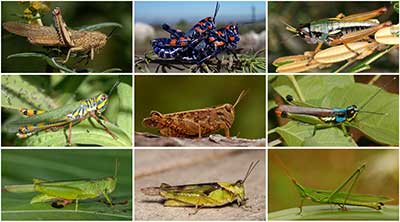Nilgiri biosphere reserve to asses grasshopper species
Grasshopper’s ecosystem is an essential part of biodiversity and is an indicator species . That is why Species Survival Commission (SSC) of International Union for Conservation of Nature (IUCN) recently decided to conduct a first of its kind red-list assessment of grasshopper species in Nilgiri biosphere reserve in south India followed by other parts of the country. The project will be started from the Nilgiri biosphere reserve spread in three states of Kerala, Tamil Nadu and Karnataka; it will help in understanding the condition of the grasshopper’s ecosystem.
The assessment project in Nilgiri biosphere reserve will be started in 2021 and will be completed in two years.
The project is funded by United Arab Emirates-based Mohammad Bin Zayed Species Conservation Fund, which works for the conservation of different species across the world.
About Grasshopper :
Grasshoppers are the major, above ground, insect consumer of vegetation on grasslands. They have an important role in the ecosystem as prey for other animals and in nutrient cycling. When grasshoppers damage crops or threaten to consume too much forage, insecticides are now used to control their populations.
The Nilgiri Biosphere Reserve :
The Nilgiri Biosphere Reserve was the first biosphere reserve in India established in the year 1986. It is located in the Western Ghats and includes 2 of the 10 biogeographical provinces of India.
The Nilgiri Biosphere Reserve falls under the biogeographic region of the Malabar rain forest. The Mudumalai Wildlife Sanctuary, Wyanaad Wildlife Sanctuary Bandipur National Park, Nagarhole National Park, Mukurthi National Park and Silent Valley are the protected areas present within this reserve.
Nilgiri biosphere reserve vegetation :
Nilgiri Biosphere Reserve comprises of substantial areas of natural vegetation ranging from dry scrub to evergreen forests and swamps thus contributing to highest biodiversity. The altitude and climatic gradients support and nourish the different vegetational types. It's natural vegetation include : moist evergreen , semi evergreen, sholas grassland.








